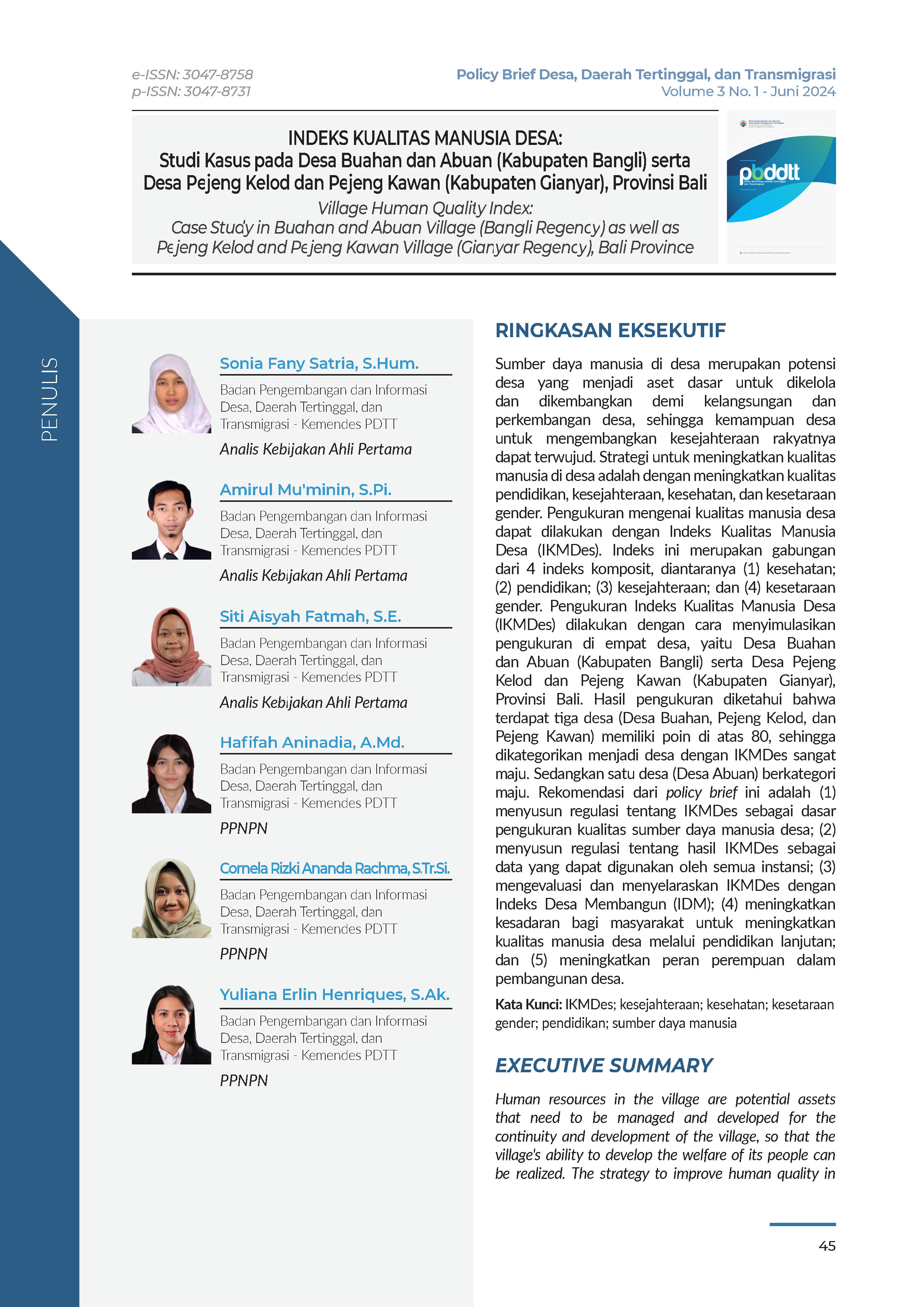Village Human Quality Index
Keywords:
education, gender equality, health, human resources, IKMDes, welfareAbstract
Human resources in the village are potential assets that need to be managed and developed for the continuity and development of the village, so that the village's ability to develop the welfare of its people can be realized. The strategy to improve human quality in villages is to improve the quality of education, welfare, health, and gender equality. Measurement of the quality of the human resources in the village can be done using the Village Human Quality Index (IKMDes). This index is a combination of 4 composite indices, including (1) health; (2) education; (3) welfare; and (4) gender equality. Measurement of the Village Human Quality Index (IKMDes) is carries out by simulating measurements in four villages, namely Buahan Village and Abuan Village (Bangli Regency), and Pejeng Kelod Village and Pejeng Kawan Village (Gianyar Regency), Bali Province. The measurement results show that there are three villages (Buahan Village, Pejeng Kelod Village, and Pejeng Kawan Village) have scores above 80. Thus categorized as villages with very advanced IKMDes, while one village (Abuan Village) is categorized as advanced. The recommendations from this paper are (1) drafting a Regulation of the Minister of Villages, Development of Disadvantaged Regions and Transmigration on IKMDes as a basis for measuring the quality of village human resources; (2) drafting a Decree of the Minister of Villages, Development of Disadvantaged Regions and Transmigration on IKMDes results as data that can be used by all agencies; (3) evaluating and aligning IKMDes with the Village Development Index (IDM); (4) raising awareness among the community to improve the quality of village human resources through further education; and (5) increasing the role of women in village development.
Downloads


